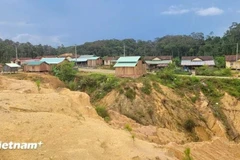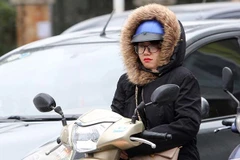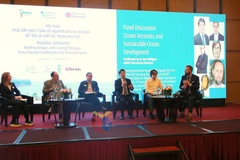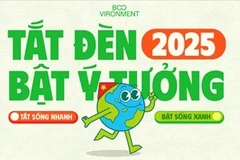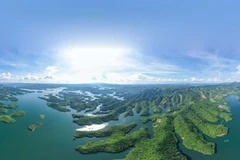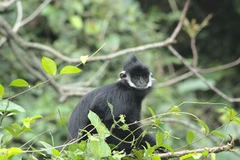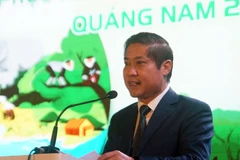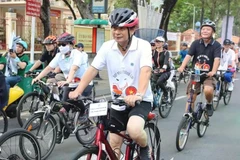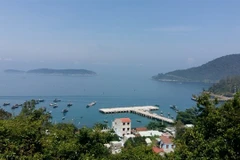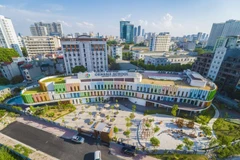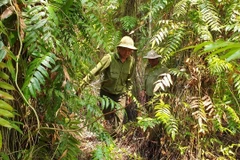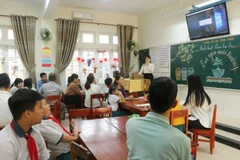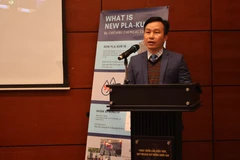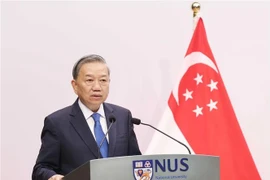Hanoi (VNA) - Vietnam is reviewing andupdating the country’s carbon emission target to better comply with the Parisagreement on climate change and prepare for the global assessment later thisyear.
Deputy Minister of Environment and Natural ResourcesVo Tuan Nhan announced the review during a recent consultation workshop, whereinternational partners such as UNDP and EU contributed ideas and technicalexpertise to help the country reduce its emissions.
Nhan said that Vietnam started its NationallyDetermined Contribution (NDC) back in June last year and the report has beenmostly completed. The greenhouse gas mitigation component focuses primarily onenergy-related policies, industrial and agricultural production, land use,land-use change and forestry (LULUCF) and waste.
Evaluation of data needed for calculating costsand the feasibility of greenhouse gas mitigation in various areas andopportunities to mitigate greenhouse gas emission between 2020 and 2030 werealso discussed.
Delegates debated Vietnam’s capability to reducegreenhouse gas emissions by 8 percent by 2030 and even achieve a 25 percent cutwith international support. They identified priority solutions for greenhousegas mitigation and challenges to take such measures.
At the event, the review team proposed 45 plansfor reducing greenhouse gas emissions in agriculture, industry, energy andLULUCF to achieve a cut of more than 299 million tonnes of CO2 between 2020 and2030.
The team is working to review the local status ofclimate change adaptation, calculate losses and damage and benefits ofintegrating climate change adaptation and mitigation, and evaluate impacts ofVietnam’s emissions cut target on the country’s socio-economic development.
Hoang Anh, an expert from the agriculture ministryand a member of the NDC review team, suggested the NDC include issues likeAgriculture 4.0, organic agriculture and aquaculture.
According to Prof. Tran Thuc, vice chairman of theadvisory council for the National Committee on Climate Change, the NDC is oneof Vietnam’s responsibilities to the international community. Closecoordination between ministries and State bodies is vital for the developmentand implementation of Vietnam’s NDC, he stressed, adding that socio-economicdevelopment is Vietnam’s ultimate goal but it must be realised in tandem withadaptation to climate change.
After signing the global climate agreement inParis in April in 2016, Prime Minister Nguyen Xuan Phuc officially ratified theaccord in November the same year – coinciding with the day the accord went intoforce and effectively binding Vietnam to the deal’s terms that set out to keepglobal warming in check.
As part of the efforts shared by 195 nations,each country is expected to submit an updated report on its NDCs every fiveyears in to ensure the global temperature rise will not exceed 2 degreesCelsius above the pre-industrial level by the end of this century. Theagreement also seeks to eventually achieve net zero emissions.
Currently, according to climate watchorganisations, Vietnam ranks 27th in greenhouse gas emissions, contributingaround 0.72 percent to the global emissions.-VNA





